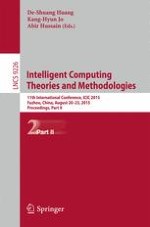2015 | OriginalPaper | Chapter
Sequence-Based Random Projection Ensemble Approach to Identify Hotspot Residues from Whole Protein Sequence
Authors : Peng Chen, ShanShan Hu, Bing Wang, Jun Zhang
Published in: Intelligent Computing Theories and Methodologies
Publisher: Springer International Publishing
Activate our intelligent search to find suitable subject content or patents.
Select sections of text to find matching patents with Artificial Intelligence. powered by
Select sections of text to find additional relevant content using AI-assisted search. powered by
